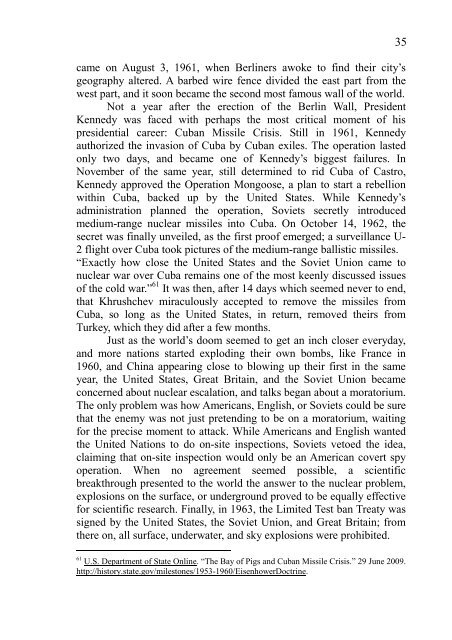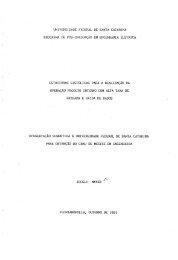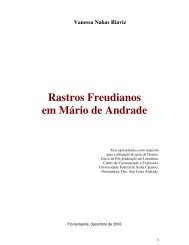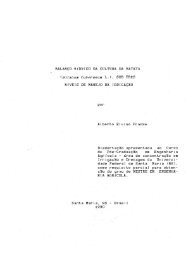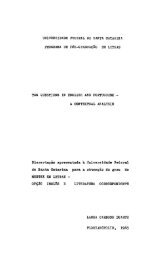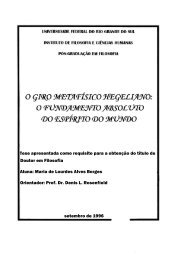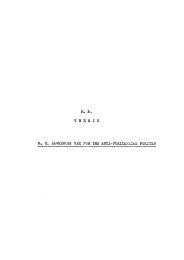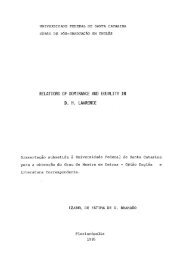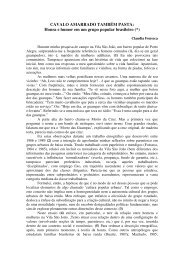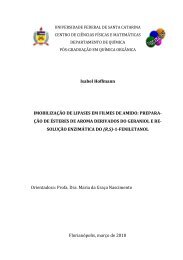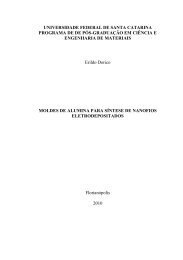Tropical ginsberg
Tropical ginsberg
Tropical ginsberg
You also want an ePaper? Increase the reach of your titles
YUMPU automatically turns print PDFs into web optimized ePapers that Google loves.
came on August 3, 1961, when Berliners awoke to find their city’s<br />
geography altered. A barbed wire fence divided the east part from the<br />
west part, and it soon became the second most famous wall of the world.<br />
Not a year after the erection of the Berlin Wall, President<br />
Kennedy was faced with perhaps the most critical moment of his<br />
presidential career: Cuban Missile Crisis. Still in 1961, Kennedy<br />
authorized the invasion of Cuba by Cuban exiles. The operation lasted<br />
only two days, and became one of Kennedy’s biggest failures. In<br />
November of the same year, still determined to rid Cuba of Castro,<br />
Kennedy approved the Operation Mongoose, a plan to start a rebellion<br />
within Cuba, backed up by the United States. While Kennedy’s<br />
administration planned the operation, Soviets secretly introduced<br />
medium-range nuclear missiles into Cuba. On October 14, 1962, the<br />
secret was finally unveiled, as the first proof emerged; a surveillance U-<br />
2 flight over Cuba took pictures of the medium-range ballistic missiles.<br />
“Exactly how close the United States and the Soviet Union came to<br />
nuclear war over Cuba remains one of the most keenly discussed issues<br />
of the cold war.” 61 It was then, after 14 days which seemed never to end,<br />
that Khrushchev miraculously accepted to remove the missiles from<br />
Cuba, so long as the United States, in return, removed theirs from<br />
Turkey, which they did after a few months.<br />
Just as the world’s doom seemed to get an inch closer everyday,<br />
and more nations started exploding their own bombs, like France in<br />
1960, and China appearing close to blowing up their first in the same<br />
year, the United States, Great Britain, and the Soviet Union became<br />
concerned about nuclear escalation, and talks began about a moratorium.<br />
The only problem was how Americans, English, or Soviets could be sure<br />
that the enemy was not just pretending to be on a moratorium, waiting<br />
for the precise moment to attack. While Americans and English wanted<br />
the United Nations to do on-site inspections, Soviets vetoed the idea,<br />
claiming that on-site inspection would only be an American covert spy<br />
operation. When no agreement seemed possible, a scientific<br />
breakthrough presented to the world the answer to the nuclear problem,<br />
explosions on the surface, or underground proved to be equally effective<br />
for scientific research. Finally, in 1963, the Limited Test ban Treaty was<br />
signed by the United States, the Soviet Union, and Great Britain; from<br />
there on, all surface, underwater, and sky explosions were prohibited.<br />
61 U.S. Department of State Online. “The Bay of Pigs and Cuban Missile Crisis.” 29 June 2009.<br />
http://history.state.gov/milestones/1953-1960/EisenhowerDoctrine.<br />
35


